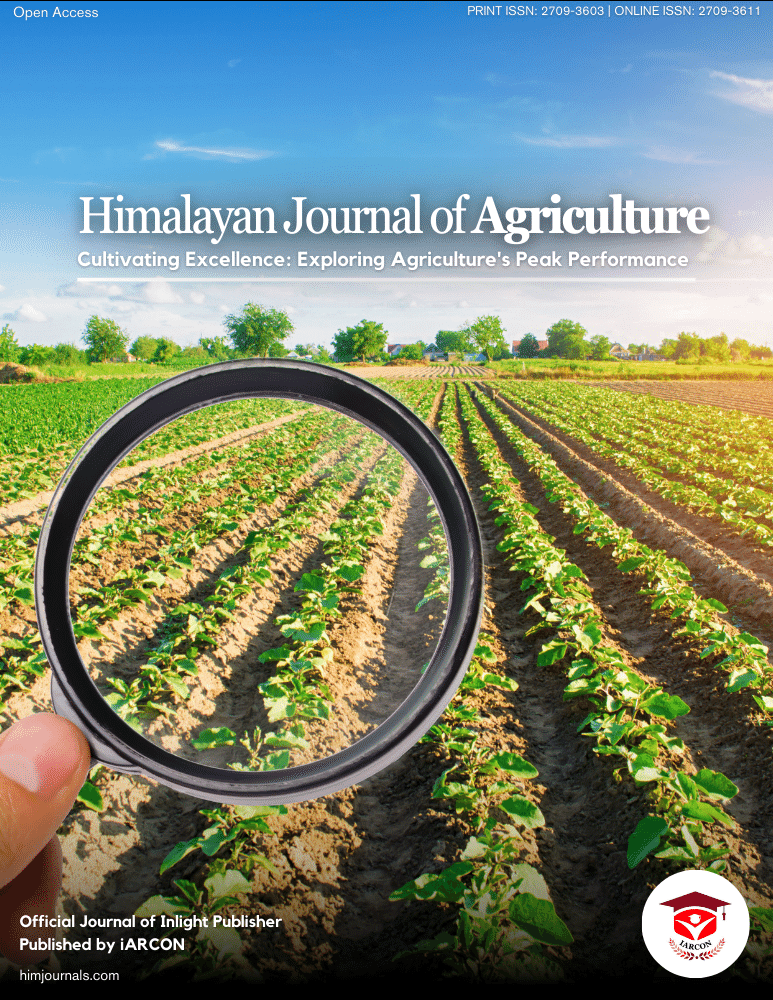Sector agriculture hold role important in Indonesia 's economy and development, sector agriculture is one capable sector survive the situation the Covid 19 pandemic, while sector other down sector agriculture precisely capable survive, that showed exports in 2020 reached 451.8 trillion or up 15.79 percent if compared with 2019 which was only 390.6 trillion [1]. Threat are you serious for continuity sector agriculture in Indonesia namely there is potency loss profession farmers in Indonesia, the caused moment this youth is not again interested to profession as farmers and more choose work in the non- agricultural sector, the drawn clear from the data from the Central Statistics Agency (Mahdi, 2022) [2] in figure 1.1, the percentage of youth working in the agriculture Keep going experience decline in period time ten year last (2011-2021).
According to data from the Central Statistics Agency in 2018 listed in Figure 1.2, the structure power work farmer dominated by residents age elderly (45-54 years) of 9.19 million soul, an extremely domineering amount if our compare with farmer with group 25 years old to bottom ones only of 885,077 souls. Refer to the data so no surprising if the National Development Planning Agency (Bappenas) predicts that if Thing this Keep going continues then at 42 years future in Indonesia no there is again working as farmer. Indeed push youth participation in field agriculture will give opportunity jobs that youth really need, and can spur necessary innovation and growth for reduce poverty in the countryside, youth have to play role important in guard security food for self alone and for generation next, because youth has superiority comparative from facet flexibility and commitment, however unfortunately, the youth think sector agriculture not enough worthy or interesting for made eye livelihood, they migrate to city for look for more productivity height and job with more wages good [3].
At a minimum youth engagement and regeneration farmer is problem happened globally, no only in Indonesia. Occur decline youth interest in Becomes worker sector agriculture although large land agriculture relatively stable, phenomenon the no only related with the reluctance of youth originating from family farmer just but also shaped by the values that apply to the family and society agriculture in general among them is image that sector agriculture tight relation with the world of men, poverty, education low, and level break high school in the family farmers [4]. At a minimum the proportion of youth in structure power work farmer occurred in all districts in the district Sidoarjo, including in the District Sidoarjo alone, only 1.87 percent farmers in the District Sidoarjo which is in the range age young (16-30 years).
Most youth are lacking interested to profession sector agriculture and more choose non- agricultural sector for made eye livelihoods (Mukembo et al, 2014; Douglas et al, 2017; Yeboah, 2020) [5-7] such as what was said Rahmawati (2017) in her research, that in a manner general youth more choose non- agricultural work for made as tool Fulfill needs alive, the youth looked non-agricultural work more promises a brighter future good if compared with sector jobs agriculture, for youth jobs sector agriculture tight relation with profession physical, no relying work thought. Impression about clean non-farm jobs, deliver more income height and position more prestigious attract young people for make it eye livelihood main. Limited land agriculture, opening opportunity obtain outside job agriculture, and increasingly increasing youth education as well the results obtained from activity agriculture not enough erratic form youth 's view of profession sector agriculture as less work promise.
Youth has perception pessimistic to ability agriculture in increase standard life them it drawn from minimal youth involvement in field agriculture [8-10]. In line with what is stated Susilowati (2016) [11], a lot reason reason decline interest power work in the sector agriculture especially that is image sector less agriculture prestigious and less can give reward or adequate income. Work sector agriculture for rural youth the more no have power pull, the caused because in a manner economy income from sector growing agriculture no promisingly, youth aversion is also influenced by subcultures new developments in the digital era such as now. Phenomenon the more decline interest power work young for work in the sector agriculture have consequence for continuity sector agriculture in the future, because burden sector agriculture will the moreheavy with increase amount population and increase Request food so that enhancement production and productivity Becomes factor key [11].
Based on the phenomenon such, then study related with youth perception of profession sector agriculture, youth interest in profession sector agriculture, influencing factors formation perception and influence perception to youth interest in profession sector agriculture looked at need held for reveal reality on problem low youth participation in sector agriculture especially in the District Sidoarjo and Regency Sidoarjo in general. This study aims to analyze the influencing factors youth perception of profession sector agriculture and to analyze the influence of perceptions on youth interest in agricultural sector jobs in Sidoarjo District, Sidoarjo Regency .


